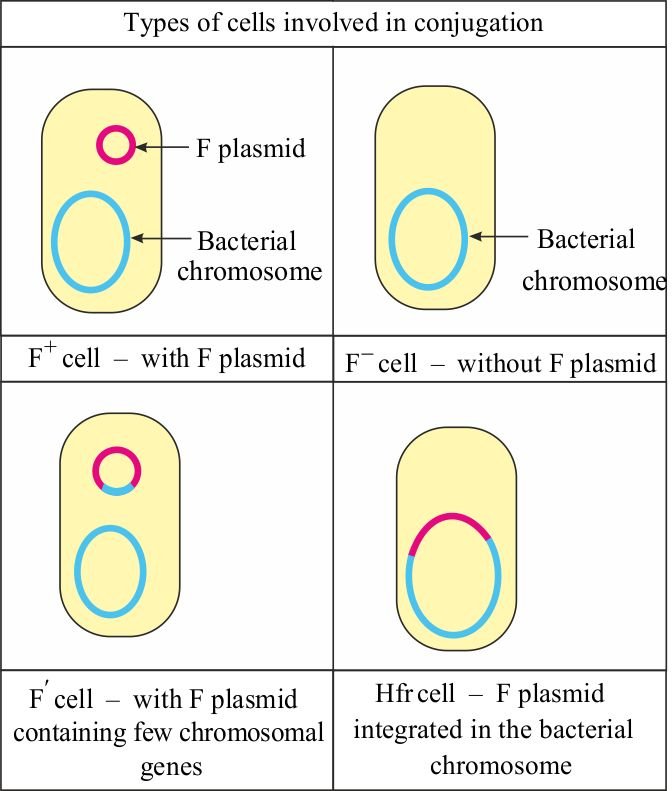Types of Cells Involved in Bacterial Conjugation
Conjugation is the process by which genetic material is transferred from one prokaryote to another. Plasmids that carry the fertility (F) factor (usually along with other genes) are transferred from the donor to the recipient cell. Because donor cells have the F factor, they have the necessary apparatus to transfer the F plasmid (such as the ability to form a sex pilus). Donor cells are therefore known as F+ cells. Recipient cells do not have the necessary conjugation apparatus, and are known as F- cells.
Once an F plasmid has been transferred to the recipient cell with the aid of a relaxosome/relaxase enzyme complex, the plasmid can recombine into the circular bacterial chromosome, resulting in a high frequency of recombination (Hfr) cell. When the plasmid is removed again from the chromosome to transfer the F plasmid to another F- cell, some other chromosomal genes can be removed into the plasmid. This imperfect removal results in an F’ cell, which has a reduced circular chromosome and an F plasmid with more genetic material than prior to recombination with the bacterial chromosome.
Pictured below are the four kinds of cells discussed: F+, F-, Hfr, and F’.
Here are some additional resources if you want to learn more about this topic:
https://youtu.be/N8Lv98pILtY - this video has a clear and concise explanation of the four kinds of cells involved in bacterial conjugation.
http://nowiknow.co.in/2017/01/25/f-f-hfr-f-cells/ - if you prefer articles, this one has a short summary of the four cell types discussed.
